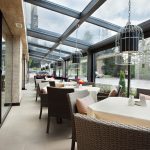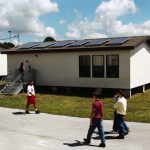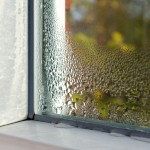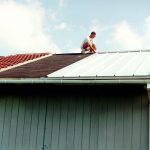
Although commercial and institutional buildings vary greatly from one to another in size, use, and type of construction, there are general recommendations for creating energy-efficient commercial buildings in a hot and humid climate.
Top 10 Checklist for Creating Energy-Efficient Commercial Buildings
 FSEC/UCF researchers have extensive experience working with commercial buildings and have developed a checklist of the TOP 10 priorities for energy efficiency:
FSEC/UCF researchers have extensive experience working with commercial buildings and have developed a checklist of the TOP 10 priorities for energy efficiency:
- Create a high performance envelope
- Optimize lighting systems
- Control ventilation
- Manage humidity in an energy-efficient manner
- Install high efficiency AC systems
- Reduce fan and pump energy use
- Manage building and HVAC system air flows
- Optimize the scheduling of energy-consuming systems
- Perform commissioning and recommissioning
- Analyze building energy use
Learn more about each of the Top 10 items.
Suggested Publications
- Top 10 Checklist for Creating Energy-Efficient Commercial Buildings
- Unbalanced Return Air in Commercial Buildings
- Measured Field Performance and Energy Savings of Occupancy Sensors: Three Case Studies
Restaurants
 Restaurants face a unique challenge when it comes to creating a comfortable environment for both their diners and their kitchen staff. Our research can help to make your restaurant more comfortable for everyone involved and save you money on your utility bills.
Restaurants face a unique challenge when it comes to creating a comfortable environment for both their diners and their kitchen staff. Our research can help to make your restaurant more comfortable for everyone involved and save you money on your utility bills.
Learn More: Restaurants
Schools and Retail Stores
 Relocatable Classrooms: Portables or “relocatable” classrooms have been used for years to accommodate growing school populations, especially in the Southeastern United States. There are large numbers of these units in service and many of them need significant improvements or replacement. This report discusses the big impact “temporary” classrooms can have on the energy footprint of a school.
Relocatable Classrooms: Portables or “relocatable” classrooms have been used for years to accommodate growing school populations, especially in the Southeastern United States. There are large numbers of these units in service and many of them need significant improvements or replacement. This report discusses the big impact “temporary” classrooms can have on the energy footprint of a school.
 Relative Humidity: During periods when air conditioning is needed, ideal indoor conditions in school buildings are about 75 degrees Fahrenheit and 50% relative humidity (RH). This report discusses energy-efficient strategies designed to control relative humidity in schools.
Relative Humidity: During periods when air conditioning is needed, ideal indoor conditions in school buildings are about 75 degrees Fahrenheit and 50% relative humidity (RH). This report discusses energy-efficient strategies designed to control relative humidity in schools.
 Roof Finish: Architects and designers have long known that light-colored building roofs can reduce cooling needs. Experiments in existing residences have shown that a white reflective roof can reduce cooling requirements by an average of 20%. The following studies look at a private elementary school building in Cocoa Beach, Florida, and seven retail shops in a strip mall in Cocoa, Florida.
Roof Finish: Architects and designers have long known that light-colored building roofs can reduce cooling needs. Experiments in existing residences have shown that a white reflective roof can reduce cooling requirements by an average of 20%. The following studies look at a private elementary school building in Cocoa Beach, Florida, and seven retail shops in a strip mall in Cocoa, Florida.
- Demonstration of Cooling Savings of Light Colored Roof Surfacing in Florida Commercial Buildings: Our Savior’s School
- Demonstration of Cooling Savings of Light Colored Roof Surfacing in Florida Commercial Buildings: Retail Strip Mall